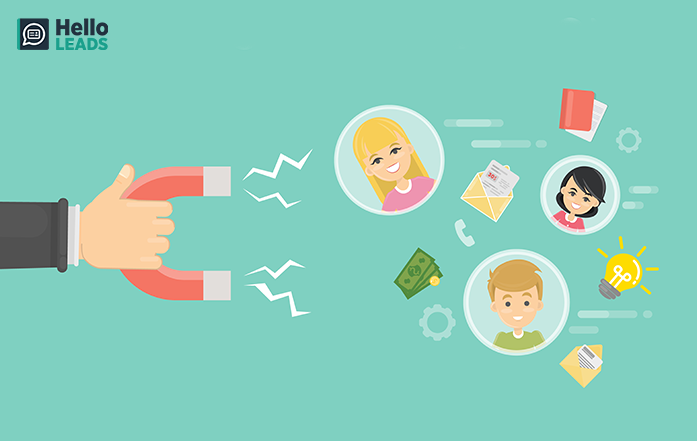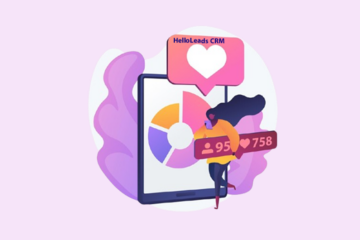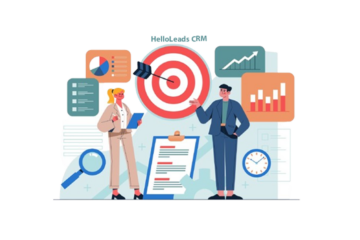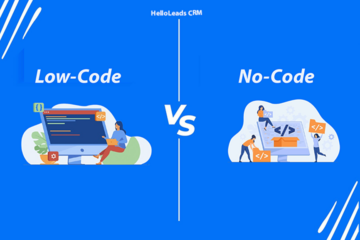
More than at any other period in human history, change is occurring more quickly and broadly, today. However, some things in a changing world cannot be changed. One such illustration is the crucial function that customers do in a corporate enterprise. A company organization, whether it is a service provider or a manufacturer of goods, depends on the money and goodwill of its customers, to exist.
Every new consumer must be attracted, which costs time and money. The acquisition costs, for the newly acquired customers, are deducted from the revenue generated by those customers within a year or two. After that, products /services can be sold for a profit that will eventually rise. If the new customers stick with the company and form an emotional connection with it over time, they will eventually persuade others to join them as consumers. This is the reason why customer retention is essential for any business.
Can every prospective client be retained? Many businesses discover that it is advisable to target a group of clients who share some characteristics regarding their needs. This makes it simpler to concentrate on offering what is most likely to satisfy them. It is critical to understand consumer behavior and identify profitable customers to make an accurate choice. However, before a company is ready to develop a service culture, other tasks must be completed. This outlines the mindset required to attract and retain clients over the long term.
Customer First – Always and Forever
This is a no-brainer. The lifeblood of a modern company is the consumer. Companies that want to increase customer loyalty must act quickly and sensitively in response to the demands and preferences of the chosen user or customer. Every individual is unique, including the products they prefer to purchase. Therefore, the company must always focus on the types of customers it can best serve. It must guarantee that they will offer a substantial enough foundation for the firm to grow. Following that, it must decide how to best satisfy and retain this specific group of clients by treating each one as an individual. If you notice, all these tasks can be completed in the shortest amount of time by using a CRM.
Let us look at a few ways in which we can boost customer retention
1. Personalize, Personalize, Personalize
No two consumers are the same, thus they might be asking for specialized services from your company. One-size-fits-all solutions should not be offered to clients that require goods and services that take different scales, time constraints, or other preferences into account.
Businesses need to figure out what they can do, to stand out from the competition to the clients they want to win or keep. Every business offers something to its customers. Almost every business has competitors who want to steal from its customers. Most businesses distinguish themselves from the competition by appealing to a specific customer base. A company may attempt to be all things to all people. It is critical to demonstrate that what you are offering is more desirable than that of the competitor most likely to win over your current or potential clients.
Research brings to light that, 78% of marketers say personalization has a “strong” or “very strong” impact, and 99% of marketers agree that it helps advance client relationships.
Keep your offering relevant and tailored to each consumer to ensure that the solution provided is the best fit for the issues they are experiencing. They’ll be more likely to buy from your business in the future because of the attentiveness your company provides.
2. Intuitive Customer Analysis – Predicting the ‘Aha’ Moments Helps
With the increased usage of debit and credit cards, businesses may monitor client buying habits and provide specialized products to returning customers. The amount of data available to marketers makes it simple to create campaigns that are particularly targeted. Even grocery stores, bookstores, newsstands, florists, and confectioners can use data from till slips and store credit cards to combine and learn about their customer’s interests. When done properly, this can be a helpful approach to establishing and maintaining a one-on-one relationship with customers
If you don’t know what your customers think of your company, it’s difficult to make improvements. To retain your customers, you have to gather customer feedback and make it available throughout your company. A customer feedback loop can be useful in this situation. It offers a method for compiling, evaluating, and dispersing client feedback and surveys. The work of a sales CRM is not only to collate and keep track of all your leads and boost lead conversion but also to record such feedback and thereby allow for the CRM to intuitively suggest the best trigger for the” Aha” moment.
There are various techniques for gathering client feedback. The most popular method is through a survey but you can also invite clients to take part in focus groups and user testing. Your staff ought to have access to a lot of pertinent consumer feedback. After you’ve collected them, you should search for patterns in consumer behavior and other areas to improve user experience as you examine your survey results. Then, distribute this knowledge to the teams that will get the most from it.
Distributing product reviews, for instance, can enable engineers and development teams to address any design issues in your product. Your company may effectively resolve complaints and enhance the customer experience by using this system to gather and exchange client reviews.
3. Educate Your Customer- Advanced knowledge increases the enjoyment of shopping
Customers who, are well-informed about the goods/service, and want to buy, approach the task with an open mind and choose the one that has the most appealing characteristics while staying within their budget. In the absence of foreknowledge, they may experience anxiety.
When tension is reduced before the purchase, the satisfaction to dissatisfaction barrier is raised. Expectations are easier to comprehend and less likely to result in disappointment.
A customer education program shows that you are committed to your customer base over the long run. As part of this program, your company develops several customer self-service resources, including a knowledge base and a discussion forum. Then, before contacting your support staff, clients use these capabilities to find answers to service-related issues. This method has proven to be a reliable and tried strategy for increasing customer success.
4. Apologize, Learn, and Move forward
Customer complaints should be responded to in a prompt, sympathetic manner to prevent further deterioration. Once a legitimate complaint is resolved, a customer will be far more loyal than they were before. Making mistakes also has an advantage. They give people the chance to learn, and they also give businesses a chance to demonstrate great customer service in how errors and complaints are handled. In this way, errors are also reduced. A customer survey found that 96% of respondents would make future purchases from a company that apologized and made things right. This means that in order to keep your loyal customers, you must plan for the inevitable mistakes, as well as how address them quickly, offer a sincere apology, and move on.
5. Rewarding Loyalty

By knowing what each customer wants, business owners can provide better service. For instance, banks have installed automated teller machines (ATMs) to relieve consumers to wait in line for simple transactions. Every time a company discovers a way to enhance its offerings to customers, it is either rewarding existing customers for their loyalty or enticing new ones. Air miles, gift cards, price breaks, free home delivery, baby-care rooms, early notice of sales, ample parking, a warm smile, and impeccably professional service are all examples of rewards for customers, and many of the most effective and enjoyable ones are the free ones. The concept is to take the product to the customer, not customer to a product
You are more likely to attract return customers if you have not disappointed them with your service. Try contacting previous customers to see if any of your current promotions will be of interest to them. Keeping current clients is much easier than getting new ones, so you should start serving past customers because they have more potential, according to basic customer service training suggestions.
6. Listen and Reflect – Stereo Surround Listening
In most cases, only the customer can identify the crucial areas in the company. Unless a corporation is aware of these critical areas, nothing done to create benchmarks and sustain quality will be successful. This is about management. Once the critical areas have been identified, attention and effort can be directed toward them. Any company must listen to its customers and build a relationship with them. First-hand accounts of what works well and what doesn’t with your strategy can teach you a lot. It is becoming more difficult for businesses to keep up, as customer feedback (compliments, comments, and complaints) is shared in an increasing number of ways. How can businesses profit from customer feedback without becoming discouraged by the noise? They must listen with one ear while responding in order to quickly understand and address any consumer concerns. Moving forward, they must listen with the other ear, gathering data to identify the fundamental reasons for both positive and negative customer experiences.
7. Employee Investment

The root of corporate culture and value system are its employees. Employees unify the entire business and direct its efforts. Employee satisfaction is both a result of and a contributing factor to customer satisfaction. The “interior quality” of a workplace, as it is sometimes referred to, has the greatest influence on employee satisfaction. This is particularly true for those in the service industry. Employee attitudes toward their jobs, co-workers, and companies serve as a barometer of internal quality. Poor service, poor value, and poor price are well-known reasons why customers leave a business. Therefore, the best value for money is obtained when each customer is valued individually. Excellence and profitability follow a similar path, which applies to both employees and customers.
The sequence of links is:
- Excellence leads to Satisfaction;
- Satisfaction leads to Loyalty;
- Loyalty leads to Profitability
Retaining the customers, you’ve already won is critical to your company’s long-term success. Remember that the cost of retaining one customer is far less than the cost of acquiring a new one. Customer Retention is the key to weathering the storm.
Share this blog :












